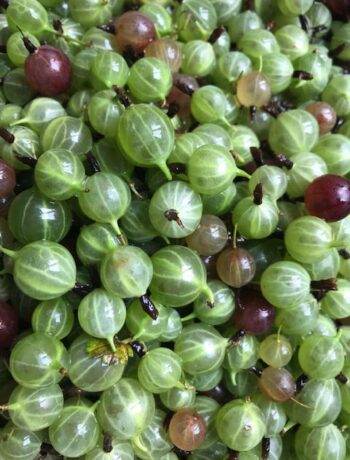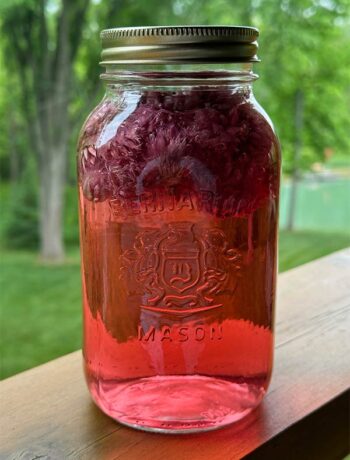The common Elderberry bush is in blossom, so what better time to harvest the flowers. Elderberry bushes are found in home gardens but also grow wild along streams and in ditches. The blossoms taste like honey, but the stems, roots and leaves are poisonous so be careful to harvest only the blossoms.
Historically, Elderberry blossom cordials have been recorded back to Roman times, but the cordial became a very popular drink in western Europe during the Victorian period. As a medicinal plant, the blossoms have been used as a tea, tincture, or salve both in fresh and dried form. For centuries they have been used to treat inflammation, stave off colds and flues, and to support immune system function. But the blossoms have also been used for culinary purposes like Elderberry blossom fritters, wine, and cordials.
Elderberry flower cordials, sometimes called a squash, are essentially an infused syrup combining blossoms, sugar, lots of lemon and a touch of citric acid which sharpens tartness and helps preserve the mix. It is beautifully flavoured with sweet-honey taste and is potent, so you only need a couple of tablespoons in a drink. It is often mixed with sparkling or still water, tonic or is used in cocktails with gin or vodka. The cordial can also be added to recipes like pancakes, crisps, jams, drizzled over pound cakes, or added to a fruit salad.
I hadn’t made Elderflower cordial before, but I truly believe we need to connect with and use the bounty of Mother Nature, so I tried it. It is good! I had four children and parents here today to learn how to make freezer jam. I offered the cordial and they accepted. Not every child was inclined, but the parents gave it a big thumbs-up. I am looking forward to using the cordial as a summer drink, cocktail, and in my baking.
preservingwithmartha@gmail.com
Elderflower Cordial (BBC Good Food)
Ingredients
- 2.5 kg sugar
- 1.5 litres water
- 2 unwaxed lemons, scrubbed
- 20 Elderflower heads, stalks trimmed, swished in cold water to remove bugs or debris
- 85 gm citric acid (I bought mine at Misty Meadows in Conn)
Instructions
Mix together sugar and water in a very large pot. Gently heat until sugar has dissolved. Stir occasionally. Using a vegetable peeler, pare off the zest of the lemons and then cut the lemons into rounds.
Once the sugar is dissolved, bring the sugar-water mixture to a boil, and turn off heat. Add cleaned blossoms, lemon slices, zest and citric acid to the pot and give it a stir. Cover the pan and leave it to infuse for 24 hours.
Strain syrup through a dampened cheesecloth lined sieve.
Ladle the syrup into sterilized jars or food-grade plastic containers. The cordial can be kept in the refrigerator for 6 weeks or frozen for long-term storage. It is possible to pasteurize the cordial, but pasteurization is a topic for another day!







No Comments